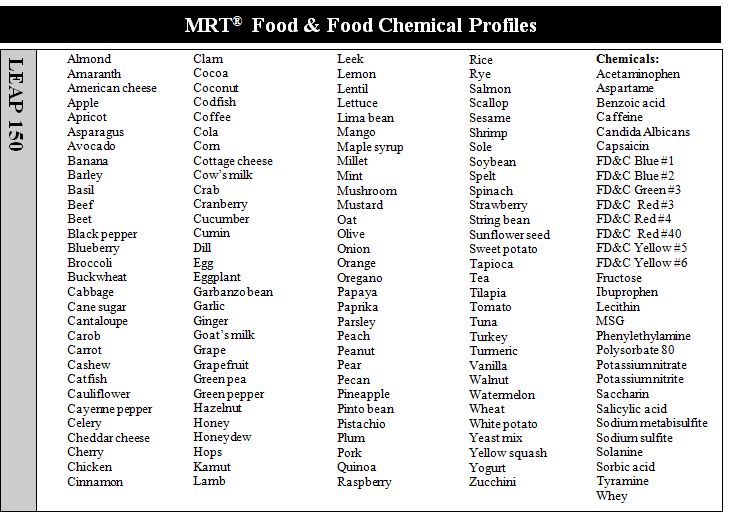
Have you enjoyed your favorite sandwich and a few minutes later, you experience unexpected stomach pain? You may have found that more and more foods you like are causing problems for you. Each person has a unique immune response to stressors. A simple food allergy testing may come back negative, but you continue to suffer. Many physical responses have been found to cause food sensitivity. The MRT Test can pinpoint some of your negative responses to certain foods.
Symptoms of Food Sensitivity
You could have been suffering in many different ways with absolutely no hope of relief. So, you went to your doctor. Perhaps he gave you the diagnosis of irritable bowel syndrome (IBS), or even inflammatory bowel (Crohn’s Disease). In addition to abdominal symptoms, you may have had frequent headaches and occasional migraines that really put a damper on your activities. You may have had indications of internal problems that manifested themselves on your skin in the form of eczema, hives, or itchiness. As if that was not enough, you had joint pain and swelling which has affected your mobility. Insomnia can also be caused by a sensitivity to food products. Fatigue, low moods, anxiety, and nausea are also symptoms of food sensitivity.
Seek the Right Help
Several family doctors may have asked you to change your diet. If they were thorough and wanted to get to the real cause of your symptoms, they may have suggested a Mediator Release Test (MRT). MRT. The mediator release test is a blood test that is used to detect food sensitivities. There are several thousand different items in our food supply. In fact, there are 42,000 items in a typical grocery store. It is impossible to test yourself for each and every food item. With the MRT, you may find that you are allergic to eight or ten different common food items. With so many foods that could possibly cause trouble in your body, how can you possible rule out more of them?
Take the Mediator Release Test
You may be able to discipline yourself to eat only your prescribed “safe” foods, or you can broaden your food palette by taking the Mediator Release Test. It will show you which foods your body does not react to. It also shows foods that moderately affect your system as well as those foods that you should avoid to stay healthy and happy. The test gives definitive results to fruits, vegetables, grains, meats, dairy products and even seasonings. It also indicates how much of a reaction a food causes in your body. When you receive your results, you may be put on a LEAP (Lifetime eating and performance) protocol, which helps you eat only those things that help you, rather than hurt you.
Identify your Safe Foods
The MRT tests for 120 different foods. 30 chemicals (some naturally occurring and some not), and it is considered to be the most effective anti-inflammatory diet protocol presently known. There are three reaction levels reported in the MRT. They are “Nonreactive”, “Moderately Reactive”, and “Reactive. Then there are immune reactive levels interpreted within each reactive levels. These range from “very low” to “very high”. Foods are not the only thing that can cause symptoms. Hormones, neurotransmitters, eating non-seasonal foods and other factors influence your body’s reaction to what you eat. The severity of your reaction to food can change from day to day.
Identify Your Inflammatory Factors
The more inflammatory factors you have at any one time, the greater your symptoms. Bacteria, parasites, and enzymes affect the immune response. It is important to identify the lowest degree of reaction on the MRT test and eat those foods. They are well tolerated despite other factors. Occasionally, there is a flare up that manifests itself in asthma brought on by stress. The results on the MRT can explain why certain stressors and food do not mix. Certain foods cause a typical inflammatory response and the white blood cells try to destroy what it assumes is dangerous.
What is the MRT kit?
The MRT Test kit involves filling out two forms. One form you check off all the foods that you are currently avoiding. The other is a requisition form to fill out which of any symptoms you are experiencing. There are also tubes for taking four vials of blood. These vials together with the two forms are sent by FEDEX to be tested. Remember that lab tests are about probabilities, not absolutes. What the test does is show you the foods that your body can tolerate best and which are not good at all for your body.
We Can Help You
We at Unique To You Nutrition can perform the MRT test and show you how to apply the LEAP protocol. I have taken the test and it has made a huge difference in my life. Check out this video I did where I discuss the results of my MRT test. Contact us today for a FREE consultation.

Leave a Reply